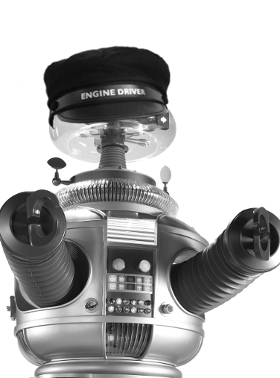Robo-rail trial driving more jobs out
 Rio Tinto's robot trains have had their first journey on a Pilbara railway.
Rio Tinto's robot trains have had their first journey on a Pilbara railway.
The company’s ambitious $US518 million autonomous train plan will see driverless vehicles hauling its iron ore to port in coming years.
The plan has been under development in the Pilbara for three years, following the successful deployment of 57 autonomous trucks at Rio's Australian iron ore mines.
Rio autonomous truck fleet is the largest in the Pilbara, using trucks produced by Japanese manufacturer Komatsu.
BHP Billiton and Fortescue Metals Group use autonomous trucks produced by US company Caterpillar.
Rio said the “effective utilisation” of driverless trucks in the Hope Downs 4 iron ore mine saw it perform 14 per cent better than in the best human-staffed mine in the Pilbara, while also coming in 13 per cent cheaper to run.
The autonomous rail system has been dubbed AutoHaul.
“Progress was also made toward AutoHaul, the world's first autonomous heavy-haul rail system, with the project moving through a number of testing phases and the first autonomous train journey piloted in the fourth quarter,” Rio Tinto said in documents published over the weekend.
Many of Rio’s 500 iron ore train drive jobs are expected to be cut when the robot trains are running.
They are the preferred option of mining bosses, as they require no human involvement to operate, relying instead on advanced radar, sensory equipment and mapping technology.
The autonomous machines can detect objects blocking their path and can respond to try and avoid impact.
Up to 41 autonomous trains are expected to be running on Rio's Pilbara network by the second half of this year.
The CFMEU expressed concerns about the impact of autonomous equipment on jobs when Rio's plan was first announced in 2012.








 Print
Print